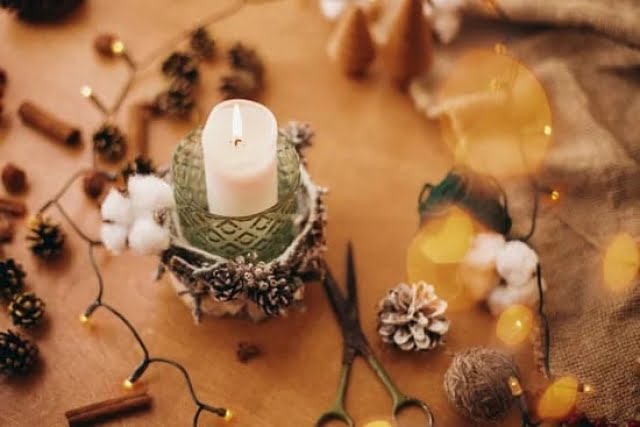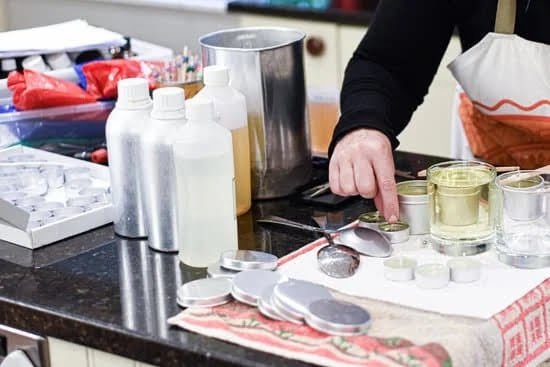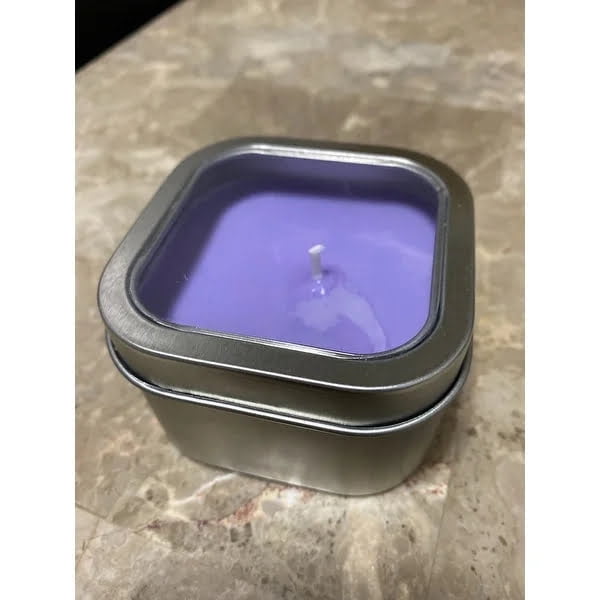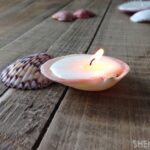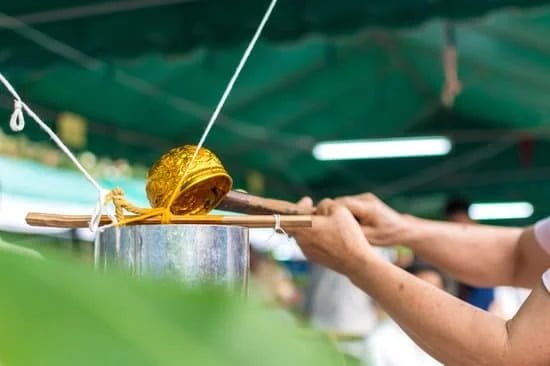Candle-making has become an increasingly popular creative outlet over the years. People are drawn to this art form for many reasons, including the fact that it can be done with relatively affordable ingredients and minimal equipment. Candle makers usually use wax, wicks, dye, and essential oils in order to create highly customized candles.
There is no limit to how creative one can be while making candles – from unique designs and shapes to scented additions that evoke special memories or feelings. As a result, candle-making has become a popular activity among those looking to make something both beautiful and meaningful with their own hands.
Candle crafting can take place either at home in a kitchen space or in a dedicated workshop; some experts will work with large-scale melting machines which can produce hundreds of unique candles per hour. Being able to create something tangible is what makes candle-making special; watching these tiny pieces of raw material come together into something with complex dimensions and attributes is truly inspiring.
Plus, being able to give or keep a personalized craft really adds another layer of satisfaction which can’t be replicated elsewhere.
As if the satisfaction that comes with creating one’s own piece wasn’t enough already, candle-makers also get access to interesting materials such as colors, dyes, scents, wax additives, drying agents and much more – all available at candle merchants like Going Yonder located on Main Street in Phoenixville. If you’re curious about making your own candles but don’t know how to start then go check out Going Yonder’s website for some helpful tips and tutorials.
The supplies you need are just waiting for you.
Benefits of Making Candles
Making candles can be a creative form of expression that also provides many benefits. Candle-making has been used in religious ceremonies and other spiritual practices throughout history due to the calming and meditative effect it provides. Not only do candles have a purpose (light and scent), but they have an energy all their own – especially when created with intention, which can actually be quite helpful in creating a peaceful environment or aid in manifesting goals.
Aside from spiritual healing, here are some measurable physical and emotional benefits to making your own candles:
- Focus – Candle-making requires concentration and organization.
- Self-assurance – Research, experimentation, and learning new techniques builds confidence.
- Flexibility – Make customized candles by adding different scents, colors or embellishments.
- Self – expression – Enjoy the creative process of unlocking ideas into beautiful objects.
We often make candles for others as gifts since it’s easy to match them to someone’s personality or mood. From the color to the scents, each candle has its own unique vibration that brings joy and reflects the identity of each individual. When crafted with love, all these aspects merge together to create something special that makes wonderful memories for both before they part ways.
Therapy is another popular benefit associated with making candles because it encourages self-care through mindfulness practices such as aromatherapy or visual art therapy. Aromatherapy involves using fragrant essential oils for physical health while visual art therapy helps with mental processing techniques such as relaxation exercises.
Quality candle making material will allow you to create delightful scented masterpieces sure to perfectly cater any group’s treatment needs particularly during stressful times in life where added emphasis on calming oneself is necessary. }.
Safety Considerations
It is important to always keep safety and fire-precaution in mind when making candles in the home. Doing so will help to ensure a finished product that is safe for all. Here are some key considerations when at work:
- Always melt wax on a heat-safe surface such as an old pot dedicated solely to melting wax.
- Never leave heated wax unattended.
- Don’t add colourants or fragrances until wax has completely cooled down and hardened.
- Ensure wicks are properly straightened before collecting them, to make sure they burn horizontally rather than diagonally or vertically in the jars.
- Purchase special equipment when necessary for candle making tasks such as gel burning candles, votives, etc.
It is also highly recommended that DIY candle makers take the necessary steps to maintain adequate ventilation; An exhaust fan should be open while melting wax as its fumes can be hazardous if excessively inhaled. Wearing protective eyewear and gloves may also be helpful in minimizing contact with any potential residue which could have adverse effects. Taking every precaution will ensure process is efficient and successful while avoiding potential hazards associated with candlemaking.
In regards to setting up for successful pouring of molten wax, there are a few general rules of thumb: Using a sturdy table covered with newspapers or other protective layer gives one room for movement and better positioning should something go awry. Lastly, laying out containers – glassware in particular – near the stovetop helps reduce strain on arms during transfer of hot liquid which can otherwise prove dangerous at times.
Supplies You’ll Need to Get Started
Making your own candles is a great way to express your creativity. It is relatively easy and the supplies are not expensive. Below is an overview of the necessary materials you will need to get started.
Wax
The most important component of making your own candle is the wax. There are several types of waxes available, such as paraffin wax, soy wax, and beeswax. Paraffin wax is the most popular and yields good results for beginners but it may produce some soot if not scented properly.
Soy wax is biodegradable, environmentally friendly and clean burning which makes it a great choice for those who desire to make eco-friendly candles. Beeswax creates long-lasting and aromatic candles with a natural honey-like scent.
Wicks
The wicks are just as important as the wax itself since its what holds in shape and let’s out light when burned. Natural cotton wicks are best used for soy or beeswax while paper core wicks work well with paraffin waxes because they are more rigid for optimal burning performance. Lead-free coreless wicks are available for people who want no metal in their candles.
Containers
You can use almost any type of container you prefer depending on what kind of design you would like your candle to have; mason jars, tealight holders, glasses, cans or even seashells all make quality containers that will hold your candle nicely. If you plan on using glass containers don’t forget that it may become very hot during use so make sure to use heat resistant ones.
Lastly, be sure the container is clean before pouring in any melted wax.
Useful Tools for a Candle Making Hobbyist
- Candle Wax – different candle types require different kinds of wax
- Melting Pot – used to heat wax for pouring candles
- Wicks – necessary for producing a flame to light the candle. Pre-tabbed wicks are easier to use
- Wax Thermometer – used to realistically gauge the temperature and help you maintain the correct temperature when needed
- Thermal Gloves – protect your hands from going near hot wax and tools
- Kettle Spout – make it easy to pour melted wax more accurately into molds.
- Candle Molds or Containers – on what your candle will take its shape.
Having these essential tools can help ensure that each step of making a candle is done correctly. Before beginning, one should familiarize themselves with the fundamentals of candle-making in order to better understand the processes involved in crafting a quality product. It’s also important to select the correct type of materials-from essential tools listed above, such as wick and melting pot selection, to mold variety which fits desired output.
Different types of candles also require certain waxes be used, like paraffin or soy blends. Selecting a pleasing scent combination is an integral part of creating an amazing finished product, so having a selection of fragrances at hand is beneficial during production as well.
Other handy accessories may include: double-boiler inserts, timer for accurate heating times, and mixing containers/spoons for scent blending. Proper ventilation should also be provided in order to prevent hazardous toxins from being released into the air while melting wax.
Investing enough time and effort into researching and understanding how each tool and material works together will result in superior quality candles that display artful design as well as rich aroma. Planning ahead with all necessary supplies not only helps streamline production but helps maximize creative freedom while experimenting with fragrances, colors, sizes and shapes until achieving optimal end results.
Wax Types
- Paraffin wax: Often the most popular type of wax, paraffin wax consists of refined petroleum. It is affordable and readily available as opposed to some of the plant-based waxes. It is also easier to work with compared to some alternatives and holds scent well.
- Soy Wax: This natural, sustainable, biodegradable wax is comparatively inexpensive and quite popular for container candles. Most brands are blended with other types to gain better end results. It has a low melting temperature and good scent throw properties.
- Beeswax: Pure beeswax is often used for making taper candles as it has enough rigidity so that it will not droop or bend easily. As a natural product it does not produce hazardous byproducts when burned.
- Rapeseed/Colza Wax: This type of wax produces a very white flame with minimal smoke or soot – both qualities are desirable in upscale candle makers minds. Most rapeseed waxes contain more than 10% beeswax, which allows them to be rolled without much effort.
- Palm Wax: A forestry-friendly wax made from the oil harvested from palm fruit is an excellent alternative to soy or paraffin if you prefer an eco-friendly product. Palm Wax has excellent rigidifying properties but poor melt point; it’s also expensive and hard to acquire in large quantities.
Now let’s take a look at how you can use the various types of candle waxes in your project. Paraffin wax is great choice when starting out because its cost effective, easy to work with, and holds scent really well.
So if you’re making taper candles or just regular container candles then this would be your go-to option for sure. You could also try soy if you prefer something more sustainable and eco-friendly; many blends combine paraffin with soy that help stabilize the burning process while retaining some sustainability benefits over straight paraffin.
Beeswax may be better suited when making tapers as opposed to container candles due to its relatively stiff nature combined with lower melting points; making it harder for these slender taper sticks to droop over time and ruining their shape. Finally Rapeseed/Colza can be used when luxe candles are desired due to its incredibly bright white flame coupled with very minimal smoke production – characteristics often associated with expensive candle experiences such as spas and luxury lounges.
If those options don’t suit you however there is always Palm wax which many candle makers have found give their polyethylene containers a beautiful sheen – making them look like they were poured directly onto crystal ware surfaces – at least until they are lit.
Candle Making Techniques
- A time-consuming but classic method of candle making is dipping. Dipping involves creating a molten wax in a tank, wicking material is then added to the end of the dipped material and left to cool. Once the wax has cooled completely, additional layers are applied until your desired thickness is achieved. It’s important to note that different types of wax require different types of heating levels for dipping.
- When creating candles from pre-made molds, melting is often used. This method requires a melt tank heated to 180 degrees Fahrenheit (82 degrees Celsius) and involves slowly adding smaller pieces of wax until the melted wax is hot enough to create a candle. Once everything is melted together, wicks can be securely added on top. The molten wax can then be carefully poured into molds or jars.
- In some cases, pouring might be used instead of melting or dipping. When pouring, the user usually liquidates chunks of hardened wax by placing it on an electric element before adding their own colours or fragrances if desired. Other materials such as glitter or ribbons can also be added at this stage. Finally, the liquidated mixture can be poured into any form using either a ladle or funnel.
- Stamping allows you to imprint an image like a logo or pattern onto pre-made shapes such as tealight cups and disc candles. For this technique, you will need candle oxidation stamps and high-temperature ink pads which are specially designed for this purpose. Once these two components have been combined correctly and allowed to dry completely they can then be pressed onto your chosen candle shape.
- Molding allows you to create custom shapes by pressing them into 4D plates called dies that have been heated up outside of moulds. A heat gun can then help build up more intricate details allowing for interesting surfaces with multiple recesses and silhouettes with both static and movable elements enabling you special designs like butterflies etc.
Dipping
Melting
Pouring
Stamping
Fragrance Options
The type of fragrance used for candle making can drastically alter the character and quality of the final product. There is an array of different fragrance options available, ranging from natural extracts to synthetic fragrances depending on the desired result.
Essential oils are one of the most commonly used types of fragrances for candle making. Essential oils typically come from plants and flowers and offer a wide variety of elevated scents such as jasmine, lavender, peppermint and rosemary. An advantage to using essential oils is that they often provide a longer lasting scent than do synthetic fragrances.
Additionally, essential oils tend to be more potent in aroma and have less additives than other types of fragrance. However, because essential oils are derived from nature they can come with a premium price tag.
Synthetic fragrances also play an important role in candle making due to their affordability and range of scents. Synthetic candles are specific molecules composed in a lab resulting in various unique aromas including fruits, spices, florals, caramels etc Many people perceive synthetic fragrances as being inferior due to their lack of natural elements however many people actually cannot tell the difference between an essential oil derived product versus a synthetically created product.
- Essential Oils: derived from plants & flowers; offer wide variety of scents; long lasting scent; more potent aroma AND higher price tag
- Synthetic Fragrances: molecules composed in lab; various unique aromas; perceived as being inferior but cannot tell difference when compared to essential oil derived product
Dyeing and Coloring Techniques
Candle making can be both fun and rewarding. Adding dyes and colors to your candle wax is one of the most pleasurable activities and a great way to express creativity. There are numerous methods of applying color to wax, each with its own set of pros, cons, and means of implementation.
Liquid Candle Dye
The most common way to color wax is by using liquid wax dyes. These dyes come in many forms, including blocks, concentrated liquid, as well as pre-dissolved liquid solids. The advantage of using this method is that it is easy to control the color saturation and the amount used.
It also tends to be more reliable than powder dyes. However, these types of dyes can be quite costly as they often need to be purchased in large quantities in order for them to be effective.
Powdered Candle Dye
Another coloring method is through the use of powdered dyes. This technique allows for maximum control over your desired results since you have greater flexibility when selecting the right colors for your candles. Additionally, powder dyes tend to more readily mix into melted wax than their liquid counterparts. But due caution needs to be exercised when utilizing powdered dye since they often fade quickly leading to lackluster results in your finished product.
Natural Colorants
Finally, using natural materials such as herbs or spices can provide an interesting look for candle making projects but care must be taken when utilizing this approach and special attention should always be given with regards safety precautions when sourcing ingredients from nature. Also note, natural ingredients often come in varying shades which may not always provide the exact hue that you desire and sometimes require multiple attempts before reaching successul results:
- Using natural materials requires additional safety attention.
- Liquid wax dye offers easier colour saturation control.
- Powdered dye can form better mixtures within melted wax.
- Natural material may deliver varying shades.
Tips and Tricks of the Trade
- Get organized.Start by setting up a dedicated workspace for your candle-making needs. Be sure to establish a comfortable temperature and arrange all the necessary supplies in an easily accessible area.
- Choose quality ingredients.By using the highest-grade scents, waxes, wicks, molds and colors you can craft top-notch candles that will draw customers in. Avoid combustible materials and any other hazardous substances so as not to be at risk of fire or unsafe fumes.
- Do some research.Look into the different types of Candle Wax available on the market so you can find the one that best suits your needs. Research fragrances and the importance of proper blending over simply “dumping” too much scent in a single batch. Look for tutorials online and read books on the subject to increase your knowledge base.
Once you have established a good understanding of candle-making fundamentals, it is time to begin crafting. If this is your first time making candles, start with small batches, experimenting with different recipes until you get familiar with their characteristics.
For larger projects, such as creating multiple candles for wedding favors or gifts, create a list of supplies needed before beginning production. Measure each ingredient carefully and mix them accordingly according to step-by-step instructions.
Keep track of how long each layer takes to solidifyso that additional layers can be added without adversely affecting earlier ones. When pouring melted wax into votivem molds or tins create even heat by constantly swiveling them around until melted wax fully coats all contours of the holder.
Strength may also be tested by hanging glass jars filled with hot wax 3-4 inches above carpeted floor from metal hardware above head height; similarly made tealights should support their own weight on displayed shelves without buckling or collapsing due to melting heat from burning flame below.
Finishing Touches
Adding decorative touches to a completed candle is an easy way to customize and beautify the finished product. Several techniques can be used to make candles stand out, from wrapping with ribbons and bows, to layering colors or sending message using stencils.
Embellish with Ribbons
Ribbons are a popular and eye-catching choice for finishing touches on candles. Extravagant and intricate flower designs or simple monochrome bands – ribbons can add texture and color to any candle design. To be sure they stand out, choose quality ribbons in vibrant colors. Guaranteed it will not go unnoticed.
Write a Personal Message
By writing a personal message on the outside of your candle, you are effectively turning it into a personalized gift for someone special. Wax letter stamps are available in craft stores which allow you to write out the desired message into wax paper sticks before burning them into the body of your candle. Alternatively, use stencils cut into self-adhesive vinyl as a safe means of inscribing words onto the scented wax without having to play around with open flames.
Layer Different Colors
A great way to make more complex patterns or attract attention towards your piece is by blending different colors together. This technique allows multiple hues to be used at once while producing unique coloring combinations along the body of your candle.
Seemingly insignificant details like two tones subtly overlapping on each other can translate into beautiful works of art when dealing with delicate wax candles. Get creative and experiment by mixing different shades until you come up with something truly unique.
Resources for Further Learning and Shopping
Making candles is a fun and resourceful art form that requires an understanding of material sciences, as well as creativity and an eye for detail. Being able to craft truly unique pieces that can be enjoyed by many brings fulfillment not only to the maker but also to those who can use them in their own home or give them away as gifts.
Candle making is becoming increasingly popular in the home décor and DIY industries due to its affordability and access to resources. With the internet offering so many different suppliers, candle makers can find the necessary materials at surprisingly reasonable prices; this makes it easier than ever to get started with making your own candles.
When starting out with candle making you will need several basic supplies such as wax, wicks, scent oils, dyes, a thermostat, molds, wick stabilizers and thermometers. It is recommended that newbie candle makers research and weigh their options before shelling out on glass containers or resin-based waxes; there are much cheaper alternatives available if you know where to look.
Once you have all of supplies you will need some type of heat source like an electric or stovetop melter which are relatively inexpensive compared to pricier methods such as double boilers. Depending on what kind of customizations you plan on doing in your candles you may also want purchase specialty molds or tools like wax melting jugs and pouring cups which can make the process much easier.
For those interested in more advanced techniques of candle making various online courses are available that provide step-by-step instruction ranging from the basics of sculpting your own molds to scented candle mixology recipes.
Many art supply stores carry classes taught by passionate tutors who are willing to share their own secrets about achieving successful results when crafting candles at home; it’s always good practice to ask around local establishments for any upcoming classes as these types of hands on experiences often prove invaluable when beginning your venture into creating original designs.
Additionally there are numerous great resources available both online and offline that offer tips & tricks such as do-it-yourself instructions for setting up a candle station in your own studio space along with other helpful advice like how-to tutorials for transforming ordinary materials into extraordinary wares that bring forth one’s imagination through flame light.
Last but not least important communities where ambitious crafters network with fellow hobbyists throughout the year on topics related directly marketed towards accomplished artisanal work ideas such as marketing strategies for selling handmade products at farmers markets or participating in gift bazaars.

Welcome to my candle making blog! In this blog, I will be sharing my tips and tricks for making candles. I will also be sharing some of my favorite recipes.

